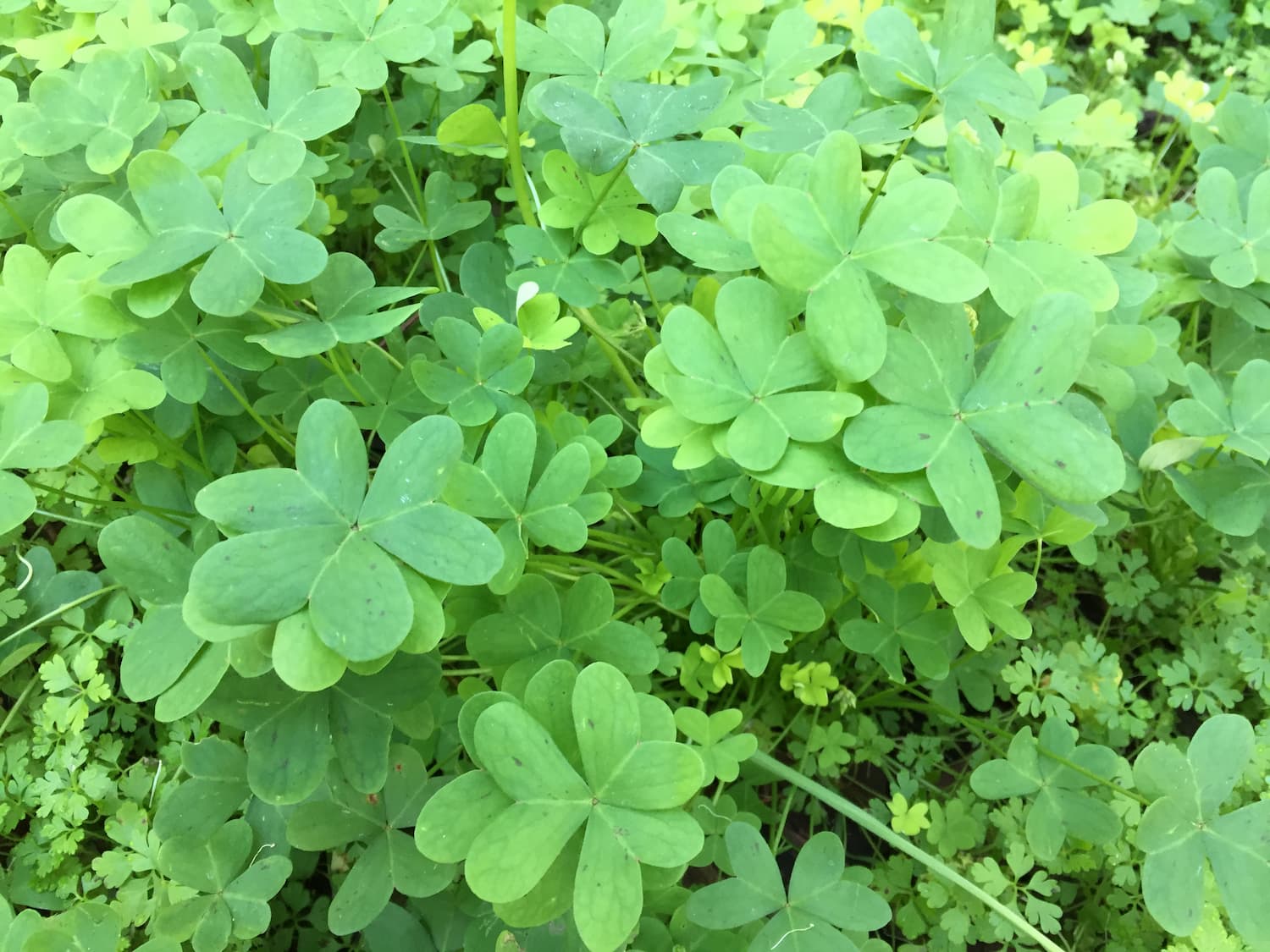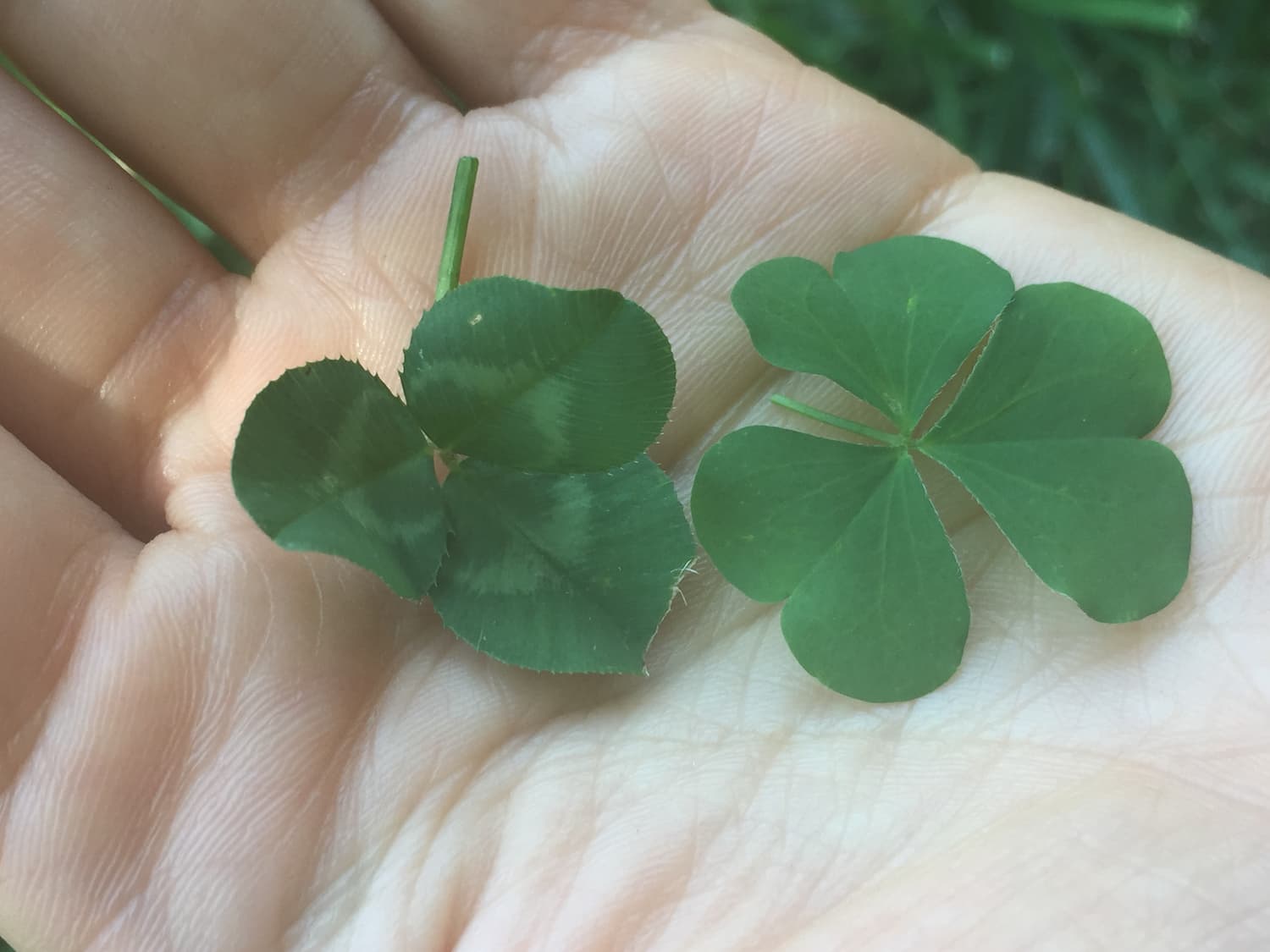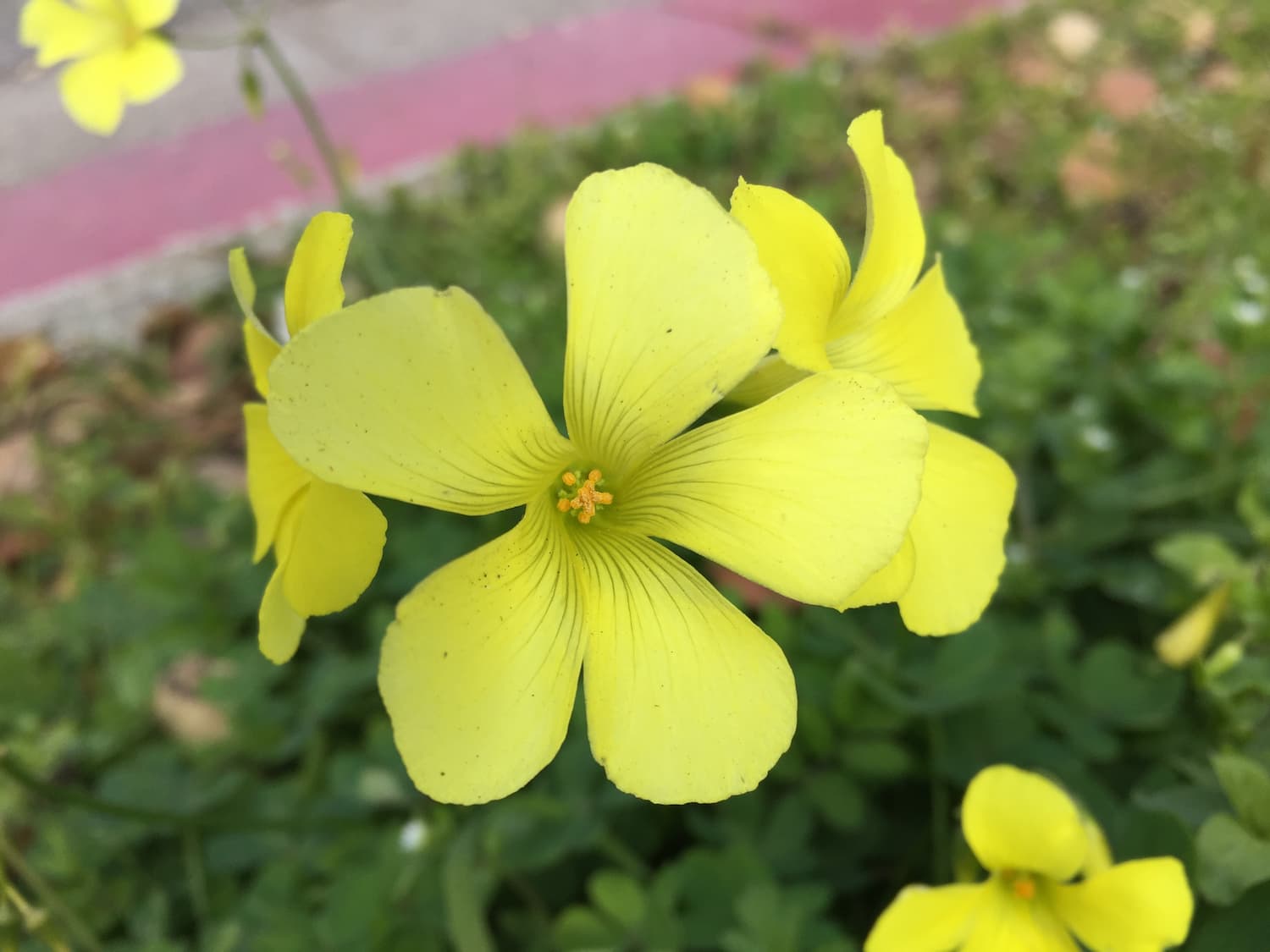How to Identify Wood Sorrel — Foraging for Edible Wild Garden Weeds
- Authors
- Name
- Sam Sycamore
- @tanoaksam
- Published on
- Last updated
What is wood sorrel?
Don't call it a clover—wood sorrel (Oxalis spp.) is an unassuming delight all its own.
You almost definitely know this plant well, even if you've never been aware of its identity. It's one of our most common weeds, ubiquitous across all of North America, and found just about anywhere there's a clump of dirt and some sunlight: lawns, gardens, cracks in sidewalks and driveways, the edges of trails in the woods, etc.
The name "wood sorrel" actually refers to many nearly identical species in the Oxalis genus, including O. stricta, O. corniculata, O. pes-caprae, and more. They can be tough to tell apart, and in truth there's no need to stress about which species you're looking at—they're all equally edible and tasty.

Oxalis pes-caprae, an especially large species known as sour grass that's invasive on the west coast of North America.
Is wood sorrel edible?
Yes! Leaves, flowers, and seed pods (which resemble miniature okra fruits) are all edible.
Its sour, lemon-ish flavor is due in part to the presence of oxalic acid (which is where this genus's scientific name comes from).
When you read about wood sorrel in the wild food literature, you'll often see very stark warnings about overconsumption of oxalic acid that might make you second-guess your desire to try eating it.
I think these warnings are mostly unfounded (unless you happen to suffer from gout or rheumatoid arthritis, in which case you already know to avoid oxalates), and it's really a shame because they only serve to discourage people from being open-minded about trying wild foods.
In reality, oxalic acid is found in higher quantities in many of our cultivated green vegetables: it's involved in the sour tanginess of kale, broccoli and other brassicas, and you also get a big ol' dose of it anytime you eat spinach. And anyway, the nature of wood sorrel is such that you will never eat as much of it in one meal as you would of our oxalic-rich cultivated greens anyway, so don't worry about the trumped-up disclaimers you might see elsewhere!
How to identify wood sorrel
At first glance, many people will mistake wood sorrel for some kind of clover (Trifolium spp.), but there's one glaring difference between these two genera that you'll notice right away if you're looking for it: wood sorrel has heart-shaped leaves, while the leaves of clovers are rounded.

Clover left, wood sorrel right. If they're tough to tell apart, rest assured that they're both edible.
Wood sorrel and clovers also feature very distinctly different flowers—sorrel has tiny yellow flowers with five petals, while clovers produce large flower heads (relative to the size of the plants) loaded with flowers that somewhat resemble those of peas.
If you make a mistake and end up with a mouthful of clover instead of wood sorrel, no worries—clovers are edible too, but their leaves can be pretty stringy and fibrous, so they're not always ideal when eaten raw like wood sorrel.
Another unique and therefore telling trait of wood sorrel is that its leaves and flowers will fold up and close in the evening, then reopen in the morning—a friendly reminder that the plant life around you is a lot more "active" than you might realize.

Wood sorrel flowers are typically yellow or white. These sour grass flowers are particular large and vivid.
When to gather wood sorrel
Wood sorrel will germinate just about anytime a patch of soil is disturbed, but for most of its range it does most of its growing in the spring and fall. In warmer parts of North America we see signs of it as early as February or March, and it will stick around until November and sometimes beyond if the weather stays mild in early winter. It will bloom continuously from about May through October in most places.
Wood sorrel will begin to wilt almost immediately after harvesting, so it's best eaten on the spot.
Its tangy, somewhat sour flavor—reminiscent of citrus—makes it an excellent garnish in just about any salad. It's also good to know when out hiking on a hot day, because a few nibbles will go a surprisingly long way towards keeping your thirst quenched.
Wood sorrel also makes a lovely tea—simply steep a generous helping of leaves in boiling water for at least 15 to 20 minutes, then sweeten if desired. Wood sorrel can act as a diuretic for some people, so don't go overboard with it in tea form if you're unsure whether it behaves this way with you.
Introduction to Foraging
Did you find this article helpful?
This is an excerpt from Introduction to Foraging: A Beginner's Guide to Gathering Wild Foods With Confidence.
Diving into the wonderful world of wild foods can be intimidating, especially if you don't have much experience working with plants.
Introduction to Foraging was written with the absolute beginner in mind, and with the goal of getting you out into the world gathering wild foods right away.
To learn everything you need to know to begin foraging safely, sustainably, and confidently, check out the book here. Happy hunting!